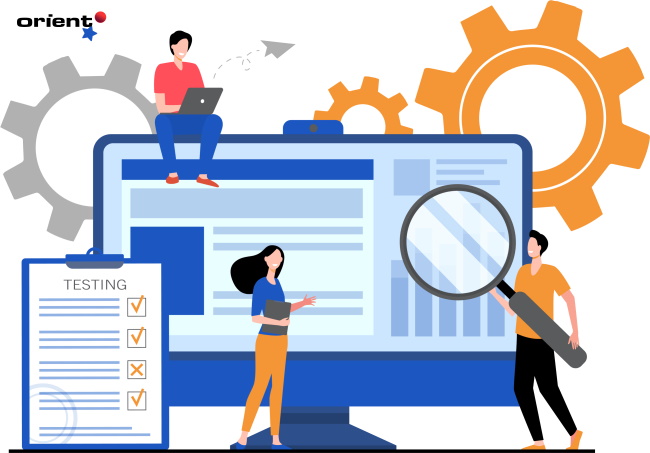Understanding the Differences Between Integration Testing vs Functional Testing

Content Map
More chaptersTesting is one of the most important steps in the Software Development Life Cycle (SDLC). Testing confirms a number of quality metrics of a software application:
- Does it work properly?
- Is it easy to use and accessed?
- Is it compatible with the right hardware, software, and cloud infrastructure?
- Is it compliant with relevant industry and global standards?
- Is it protected against the latest emerging cybersecurity threats?
- Can it provide a satisfactory user experience?
Many software testing methods exist to confirm such quality metrics. One example is Unit Testing Integration, which tests the individual components of a software application before they are integrated into the software.
Two of the most integral software testing methods are Integration Testing and Functional Testing. Although there is some crossover between the two practices – for example, both Integration and Functional Testing can help identify bugs – they are otherwise performed for different reasons and designed to achieve different outcomes.
For this reason it is important that one understands the difference between the two, especially when outsourcing to dedicated software teams, so that one knows what each testing method is for and how they contribute to the success of a software application.
What is Integration Testing?
Integration Testing is the process of testing how different modules in a software application integrate with each other. Typically performed after Unit Tests (the process of testing individual modules prior to integration), the purpose of Integration Testing is to confirm that different combinations of modules work properly and give the desired outputs.
There are three types of Integration Testing:
- Big Bang Integration: where all modules are tested under the one system at the same time.
- Top-Down Integration: where high-level modules are tested first, one by one, before proceeding down to lower-level modules
- Bottom-Up Integration: where lower-level modules are tested first, one by one, before proceeding to higher-level modules.
Each sub-branch of Integration Tests has their advantages and disadvantages.
While the Big Bang approach is an effective way to test everything integrated all at once, this coupling of all modules can make it harder to spot failures.
Similarly, the Top Down approach is great because it organically mimics how modules are introduced to users, but it also means that major functionalities are not tested until the very end.
When outsourcing to QA and software testing teams, make sure they know which sub-branches of Integration Tests to use and how to translate the test data into actionable insights that help improve the quality of your software application.
Examples of Integration Tests
- Confirming that the end user receives a welcome greeting after logging into a web application.
- Making sure a user can transition seamlessly from their online shopping cart to the billing and payment gateway pages.
What is Functional Testing?
Functional Testing is the process of testing each feature, function, and module within a software application, ensuring they work as per the predefined technical and functional requirements. These predefined requirements are typically written by a Project Manager or Product Manager.
Then, the Quality Assurance (QA) team will lay out the processes and results that the end user should, ideally, experience when they interact with the software application.
Once the Functional Tests are carried out, the results of those tests are compared to the predefined benchmarks. Any discrepancies are noted and shared with the development team so they can rectify those issues.
Since Functional Tests are a black box testing technique, the QA and Testing Teams do not require knowledge of the internal code structure in order to test the functionality of the software application.
Instead, the focus is solely on the user experience, and making sure that the frontend facing components (the parts of the software the users interact with) are working properly, and that each input is translating into the correct output.
The two most common types of Functional Tests:
- Regression Testing: confirms that a software application is functional after a recent code change or modification
- Smoke Testing: find software defects at the most basic level of functionality.
Examples of Functional Tests
- Confirming that all functions of a web application work properly, including the search function and pathway for all inbound links.
- Confirming that a user is directed to the relevant account page when they correctly enter their account login credentials, or that they receive the appropriate error message if their account login credentials are incorrect.
What are the Differences Between Integration Testing and Functional Testing?
There are many differences between Integration Testing and Functional Testing.
| Integration Testing | Functional Testing | |
|---|---|---|
| Purpose | Test the functionality of integrated modules, ensuring they work together properly | Confirm that a software application will function properly in a real-life scenario – in line with user expectations and technical requirements |
| Issues to uncover | Uncovers issues that may occur while integrating different modules together | Uncovers issues that can stop the whole software application from performing desired functionalities |
| Tools | Citrus: a Java-based test framework that helps automate different aspects of the integrating testing process LDRA: an open platform that features an Integration Testing tool suite that provides static analysis and dynamic analysis | Kobiton: for mobile applications Test Complete: a GUI test automation tools used for testing desktop, web, and mobile applications Avo Assure: allows seamless automation without requiring any coding knowledge |
What are the Advantages and Disadvantages of Integration Testing and Functional Testing?
Advantages of Integration Testing
Detect bugs early: Integration Testing can be initiated in the early stages of development to help confirm that different combinations of modules, features, and microservices work properly together. Then, the developers can resolve issues that may impede the software application’s performance and user experience.
Confirm compatibility: integration testing can confirm that third-party APIs and modules are compatible with the software application, and that they will not create any potential security gaps or negatively impact user acceptance testing.
Disadvantages of Integration Testing
The main challenges with the Integration Testing process comes down to the types of Integration Testing performed.
As previously stated, the Big Bang approach is ideal for testing multiple integrated modules at once, but this makes it harder to identify the source of faults.
Likewise, the Bottom-Up approach is ideal because it allows for the continued development of modules during the integration process. However, the process itself is time-consuming, as the test cases are not officially considered “finished” until all higher and lower-level modules are integrated and tested.
Advantages of Functional Testing
The main advantages of Functional Testing are:
- Ensures the functional and technical requirements of a software application are met.
- Ensures the software application is free of bugs and defects
- Ensures all safety and security systems are in place.
Functional Testing can be applied to all sorts of software development projects, including software updates. Software updates have the potential to introduce new, unforeseen bugs that are not present in past or current versions. By performing Functional Testing prior to releasing updates, software development teams can identify and rectify any potential issues, before the update is in the user’s hands.
Disadvantages of Functional Testing
Despite the clear advantages of Functionality Testing, there are a few drawbacks.
Because Functional Testing is such a detailed and deliberate task, the process can be quite time-consuming. This can be a problem for development teams that need to push out new features, functions, or updates quickly.
Also, Functional Testing requires more time and effort than most other software testing methods, making it more expensive.
As a result, software development teams that lack the adequate time, funding, and resources run the risk of skimming through the Functional Testing process, to meet their deadlines and satisfy clients.
Furthermore, Functional Testing doesn’t address all relevant performance-related issues of a software application, which means Non-Functional Testing should also be part of the SDLC to cover all the bases.
Ensure Software Quality with Integration Test and Functional Test

Integration testing and Functional testing are essential to delivering software applications that are safe, secure, functional, and user-friendly. Of course, like any software testing practice, one needs to know when to adopt the right Functional and Integration Tests to achieve the desired outcomes. That is where partnering with a trustworthy, capable, and reliable software development and software testing team can make all the difference.
By enlisting the help of a dedicated QA and testing team, one with years of experience in conducting all kinds of software testing practices, from Unit and Integration Tests to Functional Testing, this means you can effectively cover all your bases and ensure that your software application meets the highest quality standards.
Moreover, outsourcing to a trustworthy QA and testing team will help streamline the system testing process, thereby eliminating the risk of uncertainty causing you emotional stress and giving you the confidence that your software application is in caring hands.







